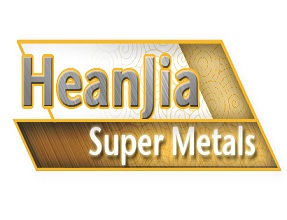You are here: home > Titanium News > Evaluation of welding quality of Titanium
Product (738)
- Pure Nickel Products (38)
- Incoloy Products (74)
- Inconel Products (72)
-
FeCrAl Product
(99)

-
Nichrome Products
(68)

- Monel Products (36)
- Hastelloy Products (49)
- Nickel Iron Alloy Product (59)
-
Nickel Copper alloys
(47)

- Nonferrous Metal Product (27)
-
Resistance Wire
(90)

- Stainless Steel Product (42)
- Mesh Demister (20)
- Others (17)
Product Forms (14)
Quality Certificate (11)
Learning Gallery (30)
Incoloy News (9)
Inconel News (22)
Molybdenum News (7)
Nikrothal News (4)
Nichrome News (13)
Titanium News (2)
Nickel News (8)
Alloys House (30)
Tools (27)
Nickel alloy News (30)
Latest Buzz (30)
nickel chrome copper iron alloys news (28)
Credit Report
Products Index
Company Info
Heanjia Super-metals Co., Ltd. [China (Mainland)]
Business Type:Manufacturer, Trading Company
City: Beijing
Province/State: Beijing
Country/Region: China (Mainland)
Titanium News
Evaluation of welding quality of Titanium
The titanium welder needs to take care of the cleansing of welding joints, accurate dimensions and complete gas shielding. Moreover he must be cautious while the process of weldingof titanium wire. The inappropriate welding can cause the contamination of welded part. Prior to begin with the arc welding, it is better to prepurge the torch, sprawling shield and support shielding to confirm the removal of complete air and achieving the vacuum. When it is viable, use the high frequency arc. The scratch beginning with the tungsten electrodes provides the source of tungsten insertions in the titanium weld.
While the arc is turned off, choose current downslope and contactor controlled by a unit foot pedal. The torch protection should be constant to cool down the weld metal less than 800°F or 427°C.
While the arc is turned off, choose current downslope and contactor controlled by a unit foot pedal. The torch protection should be constant to cool down the weld metal less than 800°F or 427°C.
The secondary and backup protection should also be constant. A blue shade on the weld part shows the untimely eradication of shielding gas. The preheating is not basically required for the titanium shop welds. However in the presence of humidity or low temperature or large moisture or moistened workplace the preheating is essential. The gas torch heating of the welding layers up to 150°F or 66° C is generally required to eradicate the humidity.
The length of arc for weld titanium must be equal to electrode diameter.If the filler metal is included the length of arc should exceed more than 1- 1.5 times of the diameter of electrode. The filler titanium wire should be fed in the weld zone at the joining point of the weld wire and arc cone. The wire should be sent sleekly and steadily in the puddle.
An intermediate dipping technique tends to turbulent that result in the contamination of warm edge of wire when the shield is removed. The noxious waste is then flown to the weld puddle on the subsequent dip. When the weld wire is separated from the inert gas shield, the edge must be clipped by 0.5'' material to avoid or remove the contamination. The interpass temperature must be sufficiently lower to avoid extra shielding.
The cleansing in the passes is not essential when the weld drip is obtained bright. The straw or light blue weld discoloration is cleaned by using wire brush. The impure weld beads can be identified by the dark blue or white color that should be eradicated by crushing. The connection point then should be cautiously produced and cleaned again prior to welding.
In advance to production of titanium welding wire the processes and methods must be precisely analyzed.The pressure vessel manufacturing, the ASME boiler and pressure vessel code, section welding qualified, process information and operation tests, these all factors must be satisfied. The tensile and curve tests are made on the test weld in conditions made for production, are the verified principles. The impact tensile tests are also essential, especially for low temperature operations. The better processes are conducted and identified by the tensile and curve tests. These tests should be strictly followed in the next production welding of wire.
Pre Page:
Different tests for evaluation of...
.gif)


